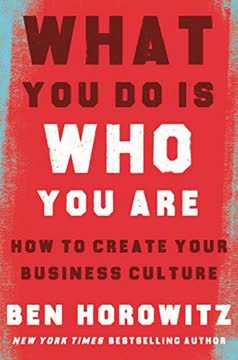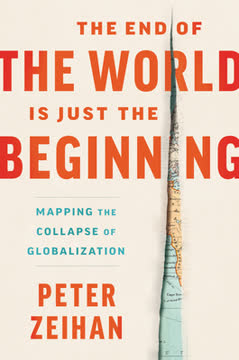Key Takeaways
1. The future is imaginable: Train your mind to anticipate change
"Any useful statement about the future should at first seem ridiculous."
Expand your imagination. The future often seems unimaginable because we're stuck in old patterns of thinking. By actively practicing futures thinking, we can train our minds to anticipate and prepare for dramatic change. This involves:
- Looking for "signals of change" - early indicators of emerging trends
- Considering "ridiculous, at first" ideas that challenge our assumptions
- Imagining how familiar things could be radically different in 10 years
Developing this skill helps reduce anxiety about the future and increases our ability to adapt. It allows us to envision both risks and opportunities, so we can work to prevent negative outcomes and create positive change.
2. Take mental time trips to expand your imagination
"When you think about how the world and your life will change over the next ten years, are you mostly worried or mostly optimistic?"
Practice episodic future thinking. Taking mental "time trips" to imagine specific future scenarios in vivid detail strengthens our ability to anticipate change. This activates multiple brain regions and creates new neural pathways. To practice:
- Imagine waking up 10 years from now. Where are you? Who's with you?
- What's different about the world? What new technologies or social norms exist?
- How do you feel? What actions would you take in this future?
By regularly engaging in these mental simulations, we become more flexible thinkers and better prepared for unexpected changes. It also helps us set more ambitious long-term goals and take actions today that benefit our future selves.
3. Practice "hard empathy" to understand different perspectives
"If I'm not imagined in your future, do I exist in it?"
Expand your circle of empathy. Hard empathy involves imagining the experiences of people very different from ourselves. This skill is crucial for anticipating how various groups might be affected by future changes. To practice:
- Find news stories about unfamiliar cultures or lifestyles
- Imagine how your own life would be if those circumstances applied to you
- Consider: What would you think, feel, and do in that situation?
Developing hard empathy helps us:
- Anticipate unintended consequences of new technologies or policies
- Design more inclusive solutions to global challenges
- Build stronger connections across diverse communities
By regularly exercising this "empathy muscle," we become better equipped to create futures that work for everyone, not just those similar to us.
4. Look for signals of change to spot emerging trends
"The future is already here. It's just not evenly distributed."
Develop "strangesight." Signals of change are concrete examples of how the world could be different in the future. They're often overlooked because they seem strange or insignificant at first. To spot them:
- Look for things that make you say "Huh, that's weird" or "I wonder why that's happening"
- Pay attention to innovations in unfamiliar fields or subcultures
- Consider how small changes could have big ripple effects if widely adopted
Examples of signals:
- A new law passed in a single city
- An experimental technology used by a niche group
- A surprising shift in behavior among young people
By collecting and analyzing these signals, we can anticipate emerging trends and prepare for potential futures before they become mainstream.
5. Identify future forces shaping society's trajectory
"Let's start by acknowledging that there's no 'back to normal' future now."
Track major trends. Future forces are significant phenomena likely to have a disruptive impact on society. They're often a combination of many signals of change. Key future forces to watch:
- Climate change and environmental challenges
- Technological advancements (AI, biotech, etc.)
- Demographic shifts (aging populations, migration)
- Economic transformations (automation, new financial systems)
- Social movements and changing cultural norms
By staying informed about these forces, we can:
- Anticipate potential risks and opportunities
- Make more strategic long-term decisions
- Contribute to shaping how these forces unfold
Regularly update your understanding of key future forces and consider how they might intersect to create unexpected outcomes.
6. Overcome normalcy bias by considering unlikely scenarios
"Almost everything important that's ever happened was unimaginable shortly before it happened."
Challenge your assumptions. Normalcy bias is our tendency to assume the future will be similar to the past. To overcome it:
- Regularly engage with "ridiculous, at first" scenarios
- Ask "What if?" questions that challenge your expectations
- Imagine how you'd respond to extreme or unexpected events
Benefits of overcoming normalcy bias:
- Increased mental flexibility and adaptability
- Better preparation for a wider range of potential futures
- Ability to spot opportunities others might miss
By practicing these skills, we become less likely to be caught off guard by dramatic changes and more capable of thriving in uncertain times.
7. Answer the call to adventure: Find your role in shaping the future
"If you're not the hero of your own future, then you're imagining the wrong future."
Discover your unique contribution. Everyone has a role to play in creating a better future. To find yours:
- Identify your skills, knowledge, passions, and values
- Consider how these strengths could be applied to future challenges
- Imagine yourself as a "hero" responding to various scenarios
Questions to ask yourself:
- What future problems am I uniquely equipped to solve?
- How can my community or industry contribute to positive change?
- What actions can I take today to prepare for future challenges?
By envisioning ourselves as active participants in shaping the future, we become more motivated to take positive action in the present.
8. Use social simulations to explore possible futures collectively
"To be hopeful means to be uncertain about the future, to be tender toward possibilities, to be dedicated to change all the way down to the bottom of your heart."
Dream the future together. Social simulations allow groups to collectively imagine and explore potential futures. To create one:
- Choose a future scenario to explore
- Invite participants to imagine living in that future for a set period
- Encourage sharing of ideas, stories, and artifacts from the imagined future
Benefits of social simulations:
- Expose participants to diverse perspectives
- Generate creative solutions to complex problems
- Build shared understanding and motivation for change
By engaging in these collective imagination exercises, we can tap into the wisdom of crowds and develop more robust strategies for navigating uncertain futures.
9. Heal the "deeper disease" to build a more resilient society
"It's not just the virus that's killing us—it's our social, economic, and political systems."
Address root causes. The COVID-19 pandemic revealed underlying societal weaknesses that exacerbated the crisis. Key areas to focus on:
- Economic inequality
- Broken health systems
- Extreme political divisions
- Racial injustice
- Brittle supply chains and overworked workers
- Climate crisis
By working to heal these "preexisting conditions," we can:
- Increase overall societal resilience
- Reduce vulnerability to future shocks
- Create a more equitable and sustainable world
Addressing these deeper issues requires long-term thinking and collective action, but it's essential for creating a truly better future.
10. Turn imagination into action: Prepare for and influence the future
"You can't control the wind, but you can adjust your sail."
Take purposeful steps. Futures thinking isn't just about prediction; it's about taking action to create the future we want. To do this:
- Identify specific actions you can take to prepare for potential futures
- Look for ways to influence the direction of change in your sphere of influence
- Collaborate with others to work towards shared visions of a better future
Examples of action:
- Develop new skills relevant to emerging trends
- Advocate for policies that address long-term challenges
- Create products or services that solve future problems
By actively engaging with the future, rather than passively waiting for it to happen, we increase our ability to thrive in uncertain times and contribute to positive change.
<words>2000</words>
Last updated:
FAQ
What's Imaginable about?
- Future Preparedness Focus: Imaginable by Jane McGonigal explores how to anticipate and prepare for future events that may seem unthinkable today. It emphasizes mental time travel and imagination in facing challenges.
- Three-Part Structure: The book is divided into three parts: "Unstick Your Mind," "Think the Unthinkable," and "Imagine the Unimaginable," each designed to enhance your ability to envision and prepare for various future scenarios.
- Practical Techniques: McGonigal provides practical techniques and games to help readers stretch their imagination and think creatively about the future.
Why should I read Imaginable?
- Enhance Creativity and Resilience: Reading Imaginable can help you develop skills to think creatively and resiliently in the face of uncertainty, reducing anxiety and increasing hope for the future.
- Real-World Applications: The book offers real-world applications of futures thinking, relevant for personal growth, professional development, and community engagement.
- Engaging and Accessible: McGonigal's engaging writing style and relatable examples make complex concepts accessible, ensuring readers can easily apply the ideas presented.
What are the key takeaways of Imaginable?
- Mental Time Travel: Envisioning yourself ten years into the future helps prepare for potential changes, creating a sense of time spaciousness and encouraging proactive thinking.
- Signals of Change: Identifying signals of change—concrete examples of how the world is already shifting—can help anticipate future trends and adapt accordingly.
- Ridiculous, at First Ideas: McGonigal suggests that useful statements about the future should initially seem ridiculous, encouraging exploration of unconventional possibilities.
What are some practical techniques from Imaginable?
- Stump the Futurist: This game involves listing things you believe cannot change in the next decade and finding evidence that they might already be changing, expanding your imagination.
- One Hundred Ways Anything Can Be Different: This technique involves listing facts about a topic and imagining how they could be different in the future, encouraging creative thinking.
- Episodic Future Thinking: The ability to vividly imagine future events enhances motivation, reduces anxiety, and improves decision-making.
What is the significance of "signals of change" in Imaginable?
- Concrete Examples of Change: Signals of change are specific, real-world examples indicating how the future might differ, serving as raw material for creating future scenarios.
- Spotting Trends: Identifying signals of change helps understand emerging trends and prepare for them, encouraging a proactive approach to future challenges.
- Personal Relevance: The most powerful signals are often found in your own community and life, making the practice of spotting signals more meaningful and actionable.
How does McGonigal suggest we prepare for "unthinkable" events?
- Mental Preparation: Techniques like mental time travel and scenario planning reduce anxiety and increase readiness for unexpected events.
- Collective Imagination: Groups coming together to envision and prepare for future challenges can lead to innovative solutions and shared resilience.
- Practice and Play: Engaging in games and exercises that stretch your imagination builds confidence and adaptability.
What is "Dator's Law" mentioned in Imaginable?
- Ridiculous, at First: Dator's Law states that any useful statement about the future should initially seem ridiculous, encouraging exploration of unconventional ideas.
- Challenging Assumptions: The law highlights the importance of questioning what we believe to be unchangeable, uncovering blind spots in our thinking.
- Practical Application: Exploring seemingly absurd ideas can lead to valuable insights and innovative solutions for future challenges.
What role does "episodic future thinking" play in Imaginable?
- Mental Time Travel: Episodic future thinking involves vividly imagining future events to prepare for them, creating a sense of familiarity with potential scenarios.
- Emotional Preparation: This practice allows individuals to pre-feel emotions associated with future events, aiding in understanding reactions and making informed decisions.
- Cognitive Benefits: Engaging in episodic future thinking enhances creativity, motivation, and overall mental well-being, encouraging a proactive mindset.
How does Imaginable address the climate crisis?
- Climate Migration: McGonigal discusses potential mass climate migration due to uninhabitable conditions, emphasizing community preparation and support.
- Collective Responsibility: The book highlights the importance of collective action in addressing climate change, encouraging equitable and sustainable solutions.
- Future Scenarios: Imagining various future scenarios related to climate change fosters creative thinking about potential solutions and adaptations.
What is the "Urgent Futures Questionnaire" in Imaginable?
- Purpose of the Questionnaire: It helps individuals assess their feelings about specific challenges and their ability to influence change, encouraging reflection on urgency, belonging, hope, and power.
- Four Key Questions: The questionnaire gauges urgency about a challenge, shared urgency, optimism for change, and perceived power to effect change.
- Encouraging Engagement: It helps identify areas for action and find communities that share concerns, serving as a starting point for deeper engagement.
What is the concept of "learned helpfulness" in Imaginable?
- Definition of Learned Helpfulness: Imagining future challenges inspires individuals to take action, breaking free from feelings of helplessness.
- Contagious Nature: Proactive steps by one person can inspire others, creating a ripple effect of courage and creativity.
- Empowerment Through Imagination: Engaging in future thinking empowers individuals to feel capable of making a difference in their lives and communities.
How can I apply the concepts from Imaginable in my daily life?
- Daily Reflection: Reflect on potential future scenarios, considering how today's actions can influence future outcomes.
- Engage with Others: Share thoughts and ideas about the future with others, fostering collaborative discussions leading to actionable insights.
- Take Small Actions: Identify small, manageable actions to prepare for future challenges, reinforcing that minor steps can lead to significant change.
Review Summary
Imaginable by Jane McGonigal explores futurism and episodic future thinking. Readers appreciate the thought-provoking scenarios and practical exercises for envisioning potential futures. The book aims to prepare individuals for unexpected changes and foster creativity in problem-solving. Some find it repetitive or anxiety-inducing, while others praise its optimistic approach. McGonigal's writing style and narration receive mixed reviews. Overall, the book is seen as insightful and potentially transformative, encouraging readers to actively engage with and shape their futures.
Similar Books








Download PDF
Download EPUB
.epub digital book format is ideal for reading ebooks on phones, tablets, and e-readers.






